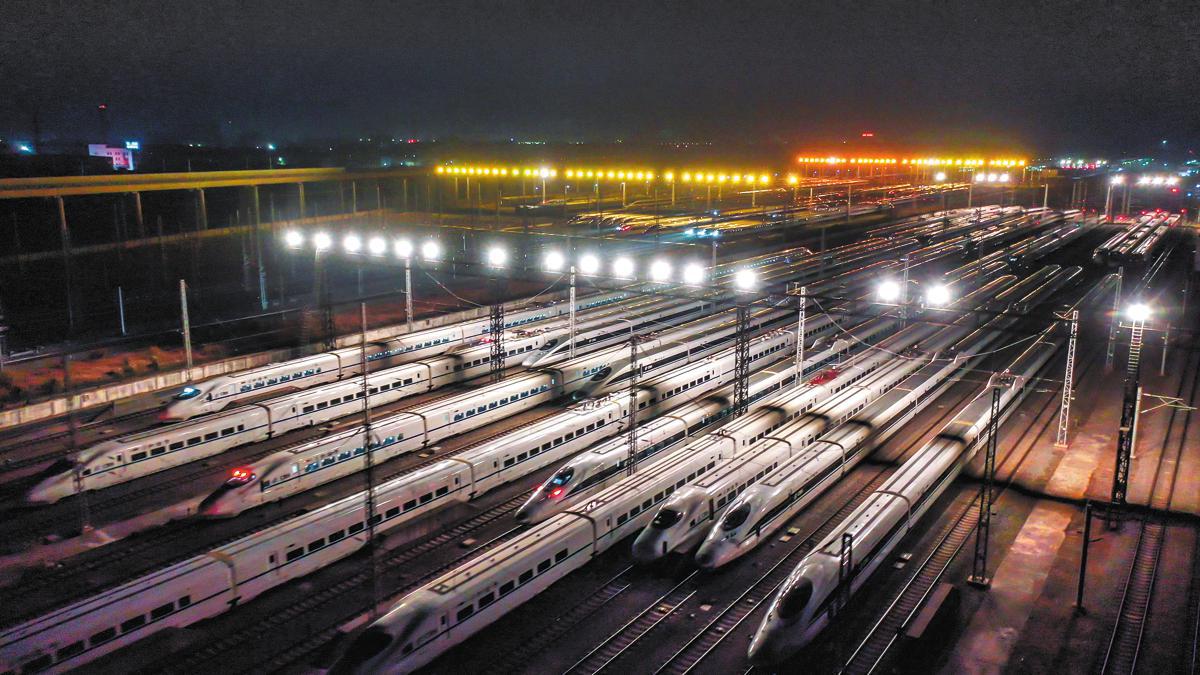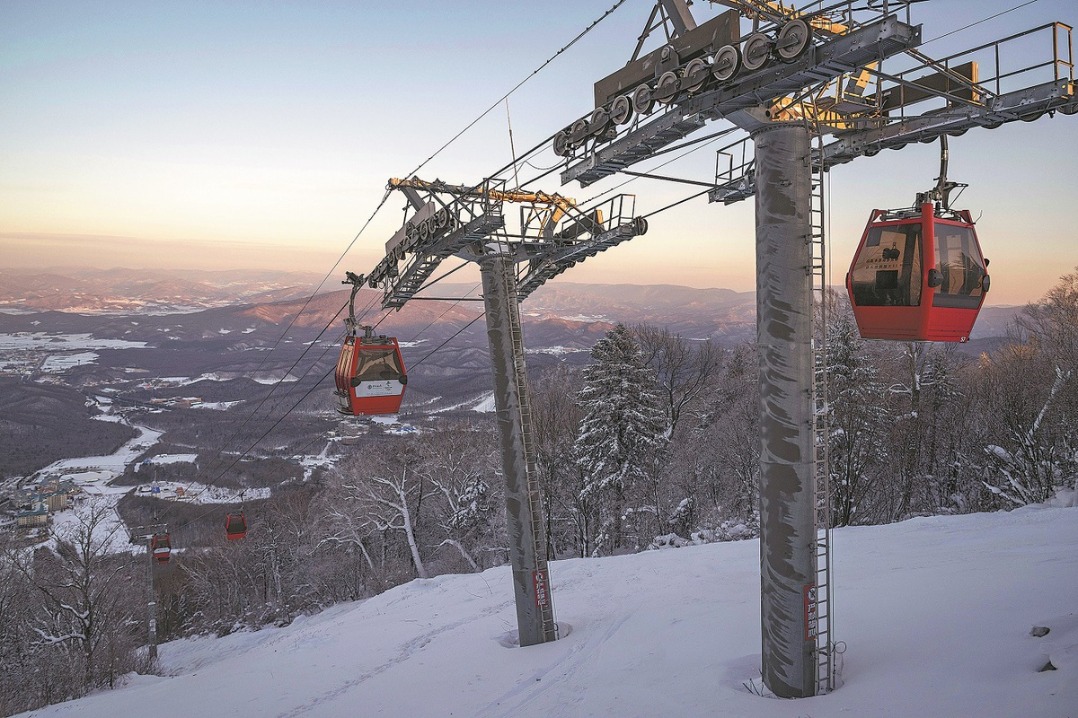Improved high-speed rail makes Spring Festival travel more comfortable
Crowded aisles and slow rides become a distant memory


Development meets demands
China's Spring Festival travel rush usually lasts for 40 days, and began this year on Jan 14. It is the world's largest annual travel season, with 9 billion trips expected to be made.
Railway transportation has always drawn the greatest attention during chunyun since it's a traditional way for people to move across the country compared with flying or driving. This year, a record 510 million trips are expected via the railway network.
Ji Jialun, a distinguished professor from Beijing Jiaotong University, said: "The rapid development of the railway, especially after the construction of high-speed rail dedicated to passenger transport, has greatly alleviated the pressure during chunyun. Previously, freight and passenger services shared the same tracks."
In 1978, China's railway network spanned 52,000 kilometers, with no high-speed rail. By the end of last year, the network had expanded to 162,000 km — 48,000 km of which were high-speed rail, forming the world's largest high-speed rail network. This transformation significantly eased travel pressures.
During this Spring Festival, over 14,000 train services operated daily, providing an extra 500,000 seats per day — a 4 percent year-on-year increase, according to China State Railway Group, the national railway operator.
Zhou Changfeng, an official from the group, said: "We made advance preparations, scientifically arranged transportation capacity, improved service quality, strengthened safety measures and enhanced emergency response capabilities."
He also mentioned that passenger capacity on popular routes had been increased through additional trains and nighttime services.
During this year's festival, Beijing West Railway Station, one of the busiest stations in the country, installed 82 additional signs to streamline transfers. More staff were deployed at platforms and exits to monitor peak-hour traffic and ensure smooth passenger flow. Close coordination with local transport authorities led to increased taxis and ride-hailing vehicles, particularly for late-night arrivals, ensuring travelers reached their destinations seamlessly.
Meanwhile, Beijing Chaoyang Railway Station introduced information cards detailing routes to other major stations, opened an express entry hall and operated four fully-staffed entrances during peak hours to allow passengers to board trains efficiently. Additional personnel were deployed to assist elderly travelers and families with children.
A traveler can even order food via the 12306 system and have it delivered directly to their seat.
Zhang recalled: "In the past, meals on the train were very basic. Although there was a dining car, most people were reluctant to spend money. I just ate steamed buns with pickled vegetables, and even brought enough food to last for days."
Train stations have undergone significant improvements. Beijing West Railway Station now features a special waiting lounge that includes a children's play area, a parental care zone, a tailored waiting section for senior travelers and a specially designed area for passengers using wheelchairs.























